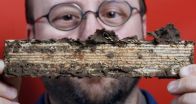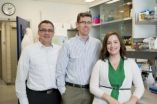(Press-News.org) A program aimed at reducing behavior problems in order to boost academic achievement has improved performance in math and reading among low-income kindergartners and first graders, according to a study by researchers at New York University's Steinhardt School of Culture, Education, and Human Development.
Their findings, which appear in the Journal of Educational Psychology, point to the value of well-designed interventions to improve education, the study's authors say.
"Supporting young low-income children so they can reach their potential in the classroom and beyond is of vital importance," says Sandee McClowry, a professor in NYU Steinhardt's Department of Applied Psychology and the study's senior author. "Our findings show that learning is enhanced when it also addresses the social and emotional development of children."
The study's other authors were: Erin O'Connor, an associate professor in NYU's Department of Teaching and Learning; Elise Cappella, an associate professor in NYU Steinhardt's Department of Applied Psychology; and Meghan McCormick, a doctoral candidate in NYU Steinhardt's Department of Applied Psychology.
Previous scholarship has shown that growing up in poverty significantly increases the likelihood that children will begin school well behind their more economically advantaged peers. Moreover, other research has revealed that children from poor families often start school with inadequate social-emotional skills, which can stymie academic progress. The impact of these phenomena is particularly felt in pre-kindergarten through third grade.
In recent decades, researchers have created interventions designed to address these matters. Among them is INSIGHTS Into Children's Temperament, which provides teachers and parents with a framework for appreciating and supporting differences in the personalities of children. During the 10-week period, teachers and parents are also taught child management strategies that match the child's temperament. In addition, children participate in 10 weekly sessions in their classrooms. As part of this program, educators employ puppets depicting four temperaments—Fredrico the Friendly, Gregory the Grumpy, Hilary the Hard Worker, and Coretta the Cautious—to help children understand and solve dilemmas they face on a daily basis.
In their study, the researchers randomized 22 urban elementary schools serving low-income families to either the INSIGHTS intervention or a supplemental reading program, which served as a control condition. Participants included 435 students in 122 classrooms.
Students received the intervention during the second half of kindergarten and the first half of first grade, with their parents and teachers participating during the same time period. The researchers collected data on students' progress at five different points during the studied period. Standardized tools were used for measuring temperament, attention span, behavioral problems, and reading/math achievement.
Their results showed that children enrolled in INSIGHTS experienced growth in math and reading achievement and sustained attention that was significantly faster than that of children enrolled in the supplemental reading program. In addition, children participating in INSIGHTS showed decreases in behavior problems over time while those enrolled in the supplemental reading program demonstrated increases.
"These results indicate that INSIGHTS supports young children's development of self-regulatory skills that are vital to learning, such as sustained attention span and curbing inappropriate behaviors," says O'Connor, the study's lead author. "The findings, combined with previous research in this area, show that programs of this nature can enhance low-income children's self-regulation skills and, with it, enhance their academic achievement in early elementary school."
INFORMATION:
The study was supported by grants from the Institute of Education Sciences (R305A080512, R305B080019).
Program to reduce behavior problems boosts math, reading, NYU Steinhardt study shows
2014-05-20
ELSE PRESS RELEASES FROM THIS DATE:
Professors' super waterproof surfaces cause water to bounce like a ball
2014-05-20
In a basement lab on BYU's campus, mechanical engineering professor Julie Crockett analyzes water as it bounces like a ball and rolls down a ramp.
This phenomenon occurs because Crockett and her colleague Dan Maynes have created a sloped channel that is super-hydrophobic, or a surface that is extremely difficult to wet. In layman's terms, it's the most extreme form of water proof.
Engineers like Crockett and Maynes have spent decades studying super-hydrophobic surfaces because of the plethora of real-life applications. And while some of this research has resulted in ...
Termite genome lays roadmap for 'greener' control measures
2014-05-20
WEST LAFAYETTE, Ind. - A team of international researchers has sequenced the genome of the Nevada dampwood termite, providing an inside look into the biology of the social insect and uncovering new genetic targets for pest control.
Michael Scharf, a Purdue University professor of entomology who participated in the collaborative study, said the genome could help researchers develop control strategies that are more specific than the broad-spectrum chemicals conventionally used to treat termite infestations.
"The termite genome reveals many unique genetic targets that can ...
Fairy circles apparently not created by termites after all
2014-05-20
This news release is available in German. Leipzig. For several decades scientists have been trying to come up with an explanation for the formation of the enigmatic, vegetation-free circles frequently found in certain African grassland regions. Now researchers have tested different prevailing hypotheses as to their respective plausibility. For the first time they have carried out a detailed analysis of the spatial distribution of these fairy circles – and discovered a remarkably regular and spatially comprehensive homogenous distribution pattern. This may best be explained ...
Fossils prove useful in analyzing million year old cyclical phenomena
2014-05-20
Research conducted at the University of Granada has shown that the cyclical phenomena that affect the environment, like climate change, in the atmosphere-ocean dynamic and, even, disturbances to planetary orbits, have existed since hundreds of millions of year ago and can be studied by analysing fossils.
This is borne out by the palaeontological data analysed, which have facilitated the characterization of irregular cyclical paleoenvironmental changes, lasting between less than 1 day and up to millions of years.
Francisco J. Rodríguez-Tovar, Professor de Stratigraphy ...
Improved computer simulations enable better calculation of interfacial tension
2014-05-20
Computer simulations play an increasingly important role in the description and development of new materials. Yet, despite major advances in computer technology, the simulations in statistical physics are typically restricted to systems of up to a few 100,000 particles, which is many times smaller than the actual material quantities used in typical experiments. Researchers therefore use so-called finite-size corrections in order to adjust the results obtained for comparatively small simulation systems to the macroscopic scale. A team of researchers from Johannes Gutenberg ...
Particles near absolute zero do not break the laws of physics after all
2014-05-20
In theory, the laws of physics are absolute. However, when it comes to the laws of thermodynamics—the science that studies how heat and temperature relate to energy—there are times where they no longer seem to apply. In a paper recently published in EPJ B, Robert Adamietz from the University of Augsburg, Germany, and colleagues have demonstrated that a theoretical model of the environment's influence on a particle does not violate the third law of thermodynamics, despite appearances to the contrary. These findings are relevant for systems at the micro or nanometer scale ...
Busting rust with light: New technique safely penetrates top coat for perfect paint job
2014-05-20
WASHINGTON, May 20, 2014 – To keep your new car looking sleek and shiny for years, factories need to make certain that the coats of paint on it are applied properly. But ensuring that every coat of paint—whether it is on a car or anything else—is of uniform thickness and quality is not easy.
Now researchers have developed a new way to measure the thickness of paint layers and the size of particles embedded inside. Unlike conventional methods, the paint remains undamaged, making the technique useful for a variety of applications from cars to artifacts, cancer detection ...
Pine bark substance could be potent melanoma drug
2014-05-20
A substance that comes from pine bark is a potential source for a new treatment of melanoma, according to Penn State College of Medicine researchers.
Current melanoma drugs targeting single proteins can initially be effective, but resistance develops relatively quickly and the disease recurs. In those instances, resistance usually develops when the cancer cell's circuitry bypasses the protein that the drug acts on, or when the cell uses other pathways to avoid the point on which the drug acts.
"To a cancer cell, resistance is like a traffic problem in its circuitry," ...
Flu vaccines in schools limited by insurer reimbursement
2014-05-20
AURORA, Colo. (May 20, 2014) – School-based influenza vaccine programs have the potential to reach many children at affordable costs and with parental support, but these programs are limited by low rates of reimbursement from third-party payers, according to recently published study results by researchers from the University of Colorado School of Medicine.
A school-based flu vaccine program in the Denver Public Schools was effective at reaching nearly one-third of the students, but billing and reimbursement issues posed significant problems for administrators of the program.
"The ...
Study shows how streptococcal bacteria can be used to fight colon cancer
2014-05-20
Researchers at Western University (London, Canada) have shown how the bacteria primarily responsible for causing strep throat can be used to fight colon cancer. By engineering a streptococcal bacterial toxin to attach itself to tumour cells, they are forcing the immune system to recognize and attack the cancer.
Kelcey Patterson, a PhD Candidate at Western and the lead author on the study, showed that the engineered bacterial toxin could significantly reduce the size of human colon cancer tumours in mice, with a drastic reduction in the instances of metastasis. By using ...





